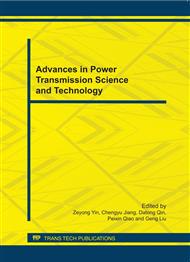p.247
p.252
p.256
p.260
p.263
p.268
p.273
p.278
p.283
Dynamic Analysis and Multi-Object Optimization of the Forced Torsional Vibration for Vehicular Multi-Stage Planetary Gears
Abstract:
On the basis of lumped parameter model and the Lagrange method, the model of powertrain was built. Resonance vibration response and non-resonance vibration response were calculated respectively in time domain and frequency domain, characteristics of forced torsional vibration in steady–state were concluded. Comparability and difference of response of parts in different stage were explained. Multi-object optimization was applied to reduce vibration.
Info:
Periodical:
Pages:
263-267
Citation:
Online since:
August 2011
Authors:
Price:
Сopyright:
© 2011 Trans Tech Publications Ltd. All Rights Reserved
Share:
Citation:


